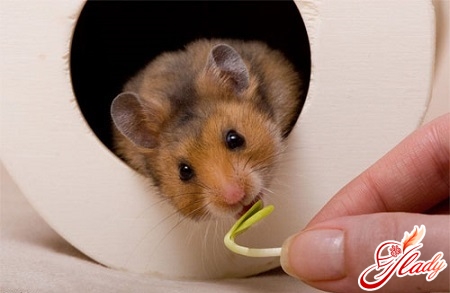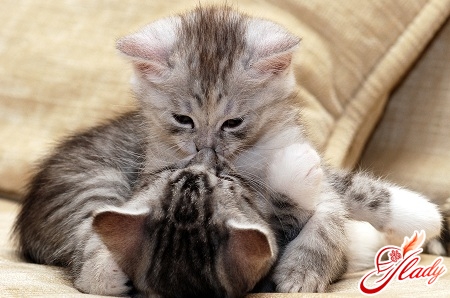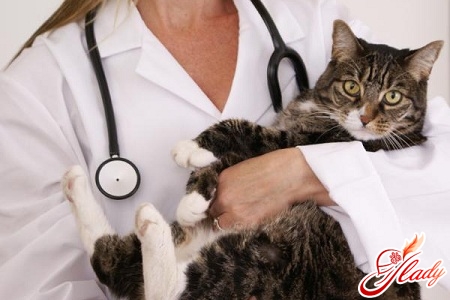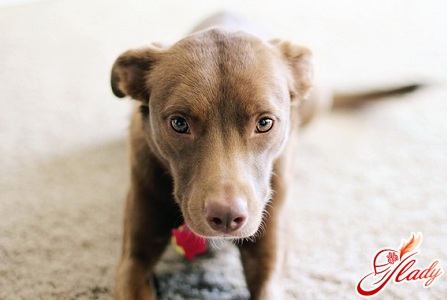 How often do you personally brush your teeth?Please don't think this is an incorrect question, but you probably do it at least twice a day. Do you brush your dog's teeth? Most dog owners not only don't do it, but would also consider such a procedure excessive. And in vain! Yes, it is an animal, but this animal does not live in the wild forest, but in your home. So the care of the animal should be appropriate. And if everyone knows the basic rules for caring for a dog, then not everyone knows how to properly brush a dog's teeth. It is believed that dog saliva has healing properties. In ancient times, it was used to treat wounds and skin diseases, and today it is used in folk medicine. But opponents of such treatment have a weighty argument, they say that dog saliva contains not only useful substances, but also harmful microorganisms. But they are right! And our domestic dogs love to kiss! Unhygienic? Maybe. But just try to avoid this happy face, which is literally trying to kiss you from head to toe. And you certainly can't explain to children what's so wrong with a dog licking them. However, dog kisses themselves are harmless, but the fact that they kiss with uncleaned teeth is really unpleasant, and to some extent dangerous. By the way, this (uncleaned teeth) is not particularly pleasant for the dogs themselves. Therefore, it is necessary to take care of your dog's teeth both for hygiene purposes and to maintain the animal's health.
How often do you personally brush your teeth?Please don't think this is an incorrect question, but you probably do it at least twice a day. Do you brush your dog's teeth? Most dog owners not only don't do it, but would also consider such a procedure excessive. And in vain! Yes, it is an animal, but this animal does not live in the wild forest, but in your home. So the care of the animal should be appropriate. And if everyone knows the basic rules for caring for a dog, then not everyone knows how to properly brush a dog's teeth. It is believed that dog saliva has healing properties. In ancient times, it was used to treat wounds and skin diseases, and today it is used in folk medicine. But opponents of such treatment have a weighty argument, they say that dog saliva contains not only useful substances, but also harmful microorganisms. But they are right! And our domestic dogs love to kiss! Unhygienic? Maybe. But just try to avoid this happy face, which is literally trying to kiss you from head to toe. And you certainly can't explain to children what's so wrong with a dog licking them. However, dog kisses themselves are harmless, but the fact that they kiss with uncleaned teeth is really unpleasant, and to some extent dangerous. By the way, this (uncleaned teeth) is not particularly pleasant for the dogs themselves. Therefore, it is necessary to take care of your dog's teeth both for hygiene purposes and to maintain the animal's health.
When to start?
Only permanent teeth need to be cleaneddogs. Babies with baby teeth can easily do without this procedure. However, you need to accustom a dog to brushing its teeth from a young age. In general, all habits in dogs are formed in puppyhood. Therefore, basic hygiene skills (washing paws, cleaning ears and teeth, bathing and combing) must be instilled in them even during the period of growing up. So get used to it yourself and accustom the puppy to the fact that teeth need to be brushed. And since the procedure should be more educational than hygienic, then baby teeth of babies just need to be wiped with gauze soaked in meat broth. This should be done daily, carefully and gently cleaning both teeth and gums. You need to be especially careful at the time when baby teeth begin to loosen and fall out.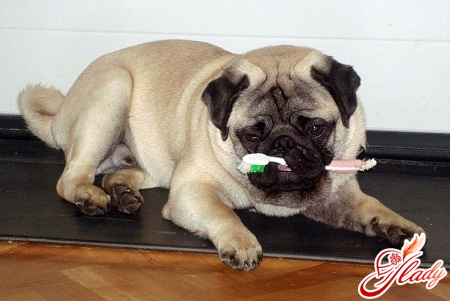
How can I brush my teeth with a dog?
Of course, the best option is –special toothpaste for dogs and a special rubber brush. This is a brush-cap that is put on your finger. It is convenient to use both an electric toothbrush and just brush your dog's teeth with a finger wrapped in gauze or a bandage. Toothpaste intended for humans is not harmful to dog teeth. However, it is better not to use it, since due to the large number of fragrances and flavor additives, such a paste will not only not please the dog, but can cause a banal allergy. If it is difficult for you to buy a special toothpaste, then you can use alternative means. For example, a mixture of tooth powder (without mint flavor!) with regular baking soda is suitable for brushing your dog's teeth. To do this, simply add a little (about half a teaspoon) of soda to the jar of powder - you get an excellent powder for cleaning dog teeth. Immediately before brushing, take a portion of the powder and dilute it with water to a gruel state. Apply the mixture to the brush and gently brush the dog's teeth. Afterwards, use a syringe or shower to rinse the mouth and wash away any remaining powder from the muzzle.
How to brush your teeth?
Let's assume that you will be brushing your teethaccording to all the rules. How to do it? First, rinse the toothbrush with water. Now apply some toothpaste (special!) to your finger and let your dog try it. Modern dog toothpastes contain fragrances and flavors that do not cause disgust in the animal. But still, let him try it! Apply toothpaste to the brush along the entire length of the bristles. Start brushing the teeth with circular movements along the lateral surfaces of the molars and incisors. Now, with scraping (sweeping) movements, go over the teeth, moving the brush from the lower gums up and vice versa - from the upper down. Then, with reciprocating (back and forth) movements of the brush, clean the chewing surfaces of the molars and premolars (molars). And do not forget about the inner surface of the dog's lower and upper teeth, which also need to be cleaned. Finish the procedure by cleaning the front incisors, making sweeping movements with the brush on both sides of the teeth. If your dog's gums bleed after brushing his teeth, wipe them with a swab soaked in a one percent solution of hydrogen peroxide. This procedure will firstly stop the bleeding, secondly, disinfect the gums, and thirdly, whiten the teeth. If the gums become inflamed, you should stop brushing your dog's teeth for a while and lubricate the gums with a special preparation, such as Lugol's solution.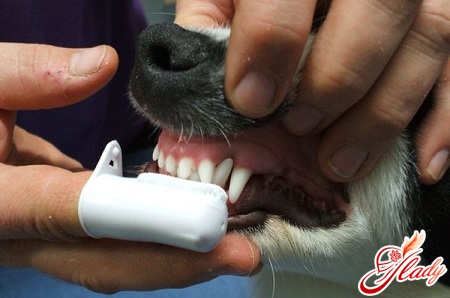
How to remove tartar?
With systematic cleaning of teeth, tartar on themshould not form. And yet. If you find tartar on your dog's teeth, it must be removed. It is best, of course, to contact a veterinary clinic, but you can also cope with this problem yourself. To begin with, you need to purchase the dental elixir Xident (or an elixir with similar properties). With this elixir, you can remove small deposits by applying gauze soaked in this liquid to the tartar. After holding this compress for some time (about a minute), rub the tartar off with the same gauze. If you need to remove old tartar, you will have to use a mechanical cleaning method. To do this, you will need a dental scaler (a special hook) or any thin but durable metal plate. For example, a nail file or a screwdriver. Take the dog by the muzzle, squeezing its jaws and simultaneously lifting its lips. Take the scaler and put it to the place where the gum meets the tooth. Lift the gum slightly upwards and sharply but carefully move the scaler downwards from the gum. In two or three steps you will remove tartar. And yet it is better to seek help from a veterinary clinic. They will perform the procedure professionally and painlessly. And to prevent tartar from appearing, you need to brush your dog's teeth systematically. The procedure should be performed twice a week, and in addition, it is advisable to give the dog beef marrow bones (knees). The fact is that when a dog gnaws such bones, it not only enjoys it, but also cleans its teeth in a natural way for dogs. And for decorative breeds and very small dogs, brushing their teeth with toothpaste and a brush remains the only hygienic procedure for maintaining dental health. After all, large marrow bones are often literally beyond their teeth. Do not be confused by the very fact: "I brush my dog's teeth." Modern domestic dogs live in too refined conditions and do not receive food that would help clean their teeth and prevent the formation of tartar. Knowing how to properly brush your dog's teeth, you will be able to carry out this procedure without unnecessary hassle and without much difficulty. Be attentive to your pets and remember that we are responsible for those we have tamed. We recommend reading:




